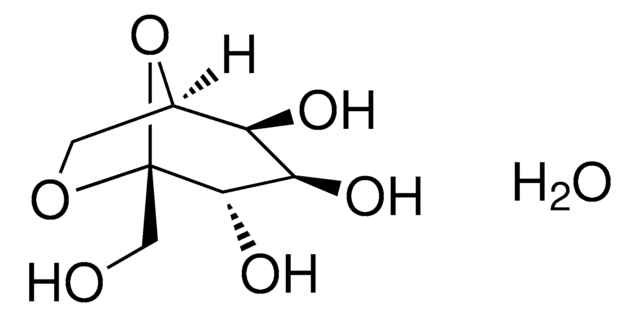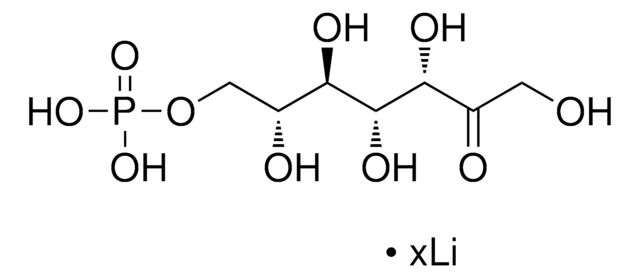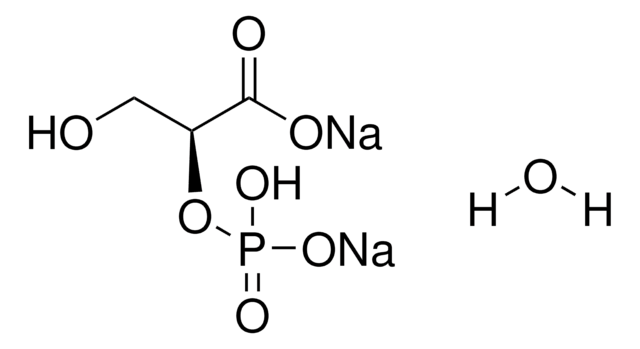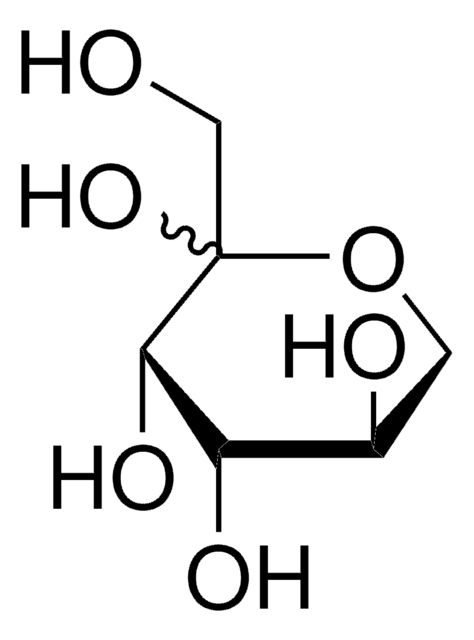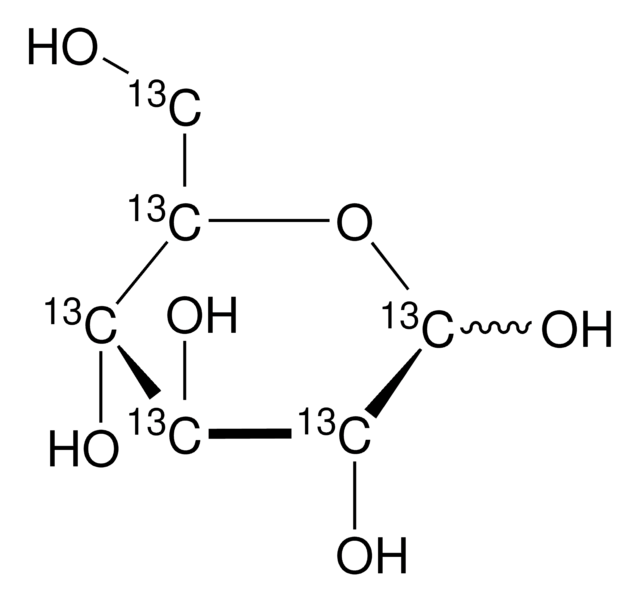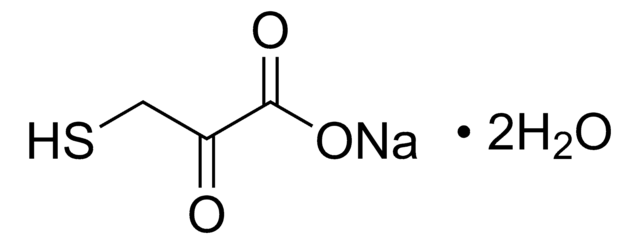07532
D-Sedoheptulose
≥95% (TLC)
Synonym(s):
D-altro-2-Heptulose
Sign Into View Organizational & Contract Pricing
All Photos(1)
About This Item
Empirical Formula (Hill Notation):
C7H14O7
CAS Number:
Molecular Weight:
210.18
Beilstein:
1726427
EC Number:
MDL number:
UNSPSC Code:
12352202
PubChem Substance ID:
NACRES:
NA.32
Recommended Products
Quality Level
Assay
≥95% (TLC)
form
liquid
solid (semi solid, viscous liquid)
color
beige to very dark red-brown
storage temp.
2-8°C
SMILES string
OC[C@@H](O)[C@@H](O)[C@@H](O)[C@H](O)C(=O)CO
InChI
1S/C7H14O7/c8-1-3(10)5(12)7(14)6(13)4(11)2-9/h3,5-10,12-14H,1-2H2/t3-,5-,6-,7-/m1/s1
InChI key
HSNZZMHEPUFJNZ-SHUUEZRQSA-N
Biochem/physiol Actions
D-Sedoheptulose, also known as D-altro-2-heptulose, facilitates the cyclic regeneration of D-ribulose for carbon dioxide fixation in plant photosynthesis.
Substrate for sedoheptulose kinase CARKL directing macro-phage polarization through control of glucose metabolism. Accumulation under carbondioxide enrichment in leaves. Patients with the autosomal recessive lysosomal storage disease cystinosis have elevated urinary concentrations of sedoheptulose.
Packaging
Bottomless glass bottle. Contents are inside inserted fused cone.
Other Notes
To gain a comprehensive understanding of our extensive range of Monosaccharides for your research, we encourage you to visit our Carbohydrates Category page.
Storage Class Code
10 - Combustible liquids
WGK
WGK 3
Flash Point(F)
Not applicable
Flash Point(C)
Not applicable
Choose from one of the most recent versions:
Already Own This Product?
Find documentation for the products that you have recently purchased in the Document Library.
M M C Wamelink et al.
Molecular genetics and metabolism, 102(3), 339-342 (2011-01-05)
Cystinosis is an autosomal recessive lysosomal storage disease caused by mutations in CTNS. The most prevalent CTNS mutation is a homozygous 57-kb deletion that also includes an adjacent gene named SHPK (CARKL), encoding sedoheptulokinase. Patients with this deletion have elevated
Gonzalo R Lara-Issasi et al.
Journal of ethnopharmacology, 225, 159-168 (2018-07-11)
The medicinal plant Sedum oxypetalum Kunth (Crassulaceae), locally known as Jiote or in general Siempreviva (always alive) has been traditionally used by people of the Mexican community of Tenango del Valle as a home remedy to treat periodontal diseases, inducing
Determination of minor carbohydrates in carrot (Daucus carota L.) by GC?MS.
Soria AC, et al.
Food Chemistry, 114(2), 758-762 (2009)
Johan Ceusters et al.
Journal of experimental botany, 64(6), 1497-1507 (2013-02-05)
In contrast to the well-documented roles of its mono- and bisphosphate esters, the occurrence of free sedoheptulose in plant tissues remains a matter of conjecture. The present work sought to determine the origin of sedoheptulose formation in planta, as well
Yupeng Xie et al.
Carbohydrate research, 342(11), 1510-1513 (2007-05-23)
A facile synthetic approach to 7-O-galloyl-D-sedoheptulose (1), a natural product with notable immunosuppressant activity, was developed. The starting material, 2,7-anhydro-d-sedoheptulose (2), was converted in three steps into 1,3,4,5-tetra-O-benzyl-d-sedoheptulose (5), a key intermediate that allows specific functionalization at C-7 of the
Our team of scientists has experience in all areas of research including Life Science, Material Science, Chemical Synthesis, Chromatography, Analytical and many others.
Contact Technical Service